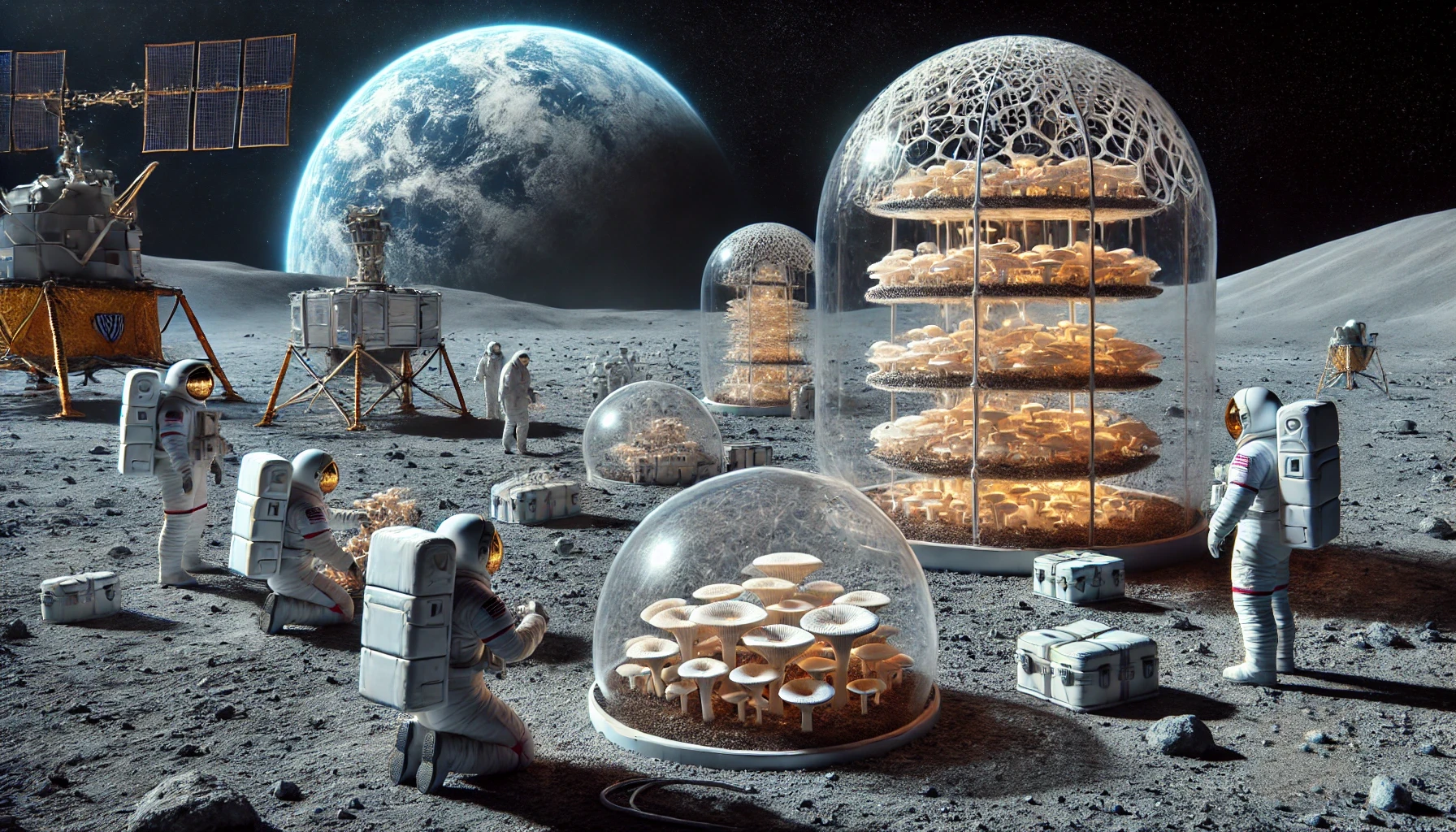Shroom with a View

With plans to move Americans to the Moon and beyond, NASA is having to get creative with ways to support human life in space.
Mushrooms might be the solution.
In a statement this summer, NASA announced that it will pour funding into researching how the agency might “grow” homes in space using fungi. The “Mycotecture Off Planet project” was awarded $2 million over two years to continue advancing the technology of Mycelium architecture.
The idea behind the project is to use the resources already available on the Moon, like water and lunar dust, to build a base, instead of lugging equipment from Earth.
That’s preferable because it is costly and dangerous to get to space, and building structures there will be no small feat. It takes about a million dollars to get even one pound of material to the Moon, and even more to Mars, according to Al Jazeera.
Meanwhile, the resources on the moon are sufficient to feed some fungal species which can be fashioned into building materials stronger than concrete. This “mushroom” material supposedly comes with an array of benefits such as insulation properties from the cold. It is also highly effective as a shield from electromagnetic radiation.
Radiation and its grave consequences for human health have been among the main issues that have halted space missions in the past. NASA researchers have found they can block more than 99 percent of radiation with just 3 inches of the material.
Lynn Rothschild, the head researcher on the project, explained to BBC how the fungi would work to create the Moon structures, “We would start with a double-bag, like a plastic bag one inside the other. In the middle part you have a very lightweight, collapsible scaffold that you’ve laced with dried fungal mycelia, and a few small containers with water.”
“It would fold up and when you get to your destination you just add water and the structure inflates and the fungi grow to fill the scaffold – you’ve got your habitat,” Rothschild added.
The last time humans went to the Moon was more than 50 years ago, in 1972 with the Apollo 17 mission. Now, with the ongoing Artemis program and the goal of building a sustainable lunar colony by 2040, projects such as these are receiving more funding and attention.
“As NASA prepares to explore farther into the cosmos than ever before, it will require new science and technology that doesn’t yet exist,” said NASA Administrator Bill Nelson. “This new research is a stepping-stone to our Artemis campaign as we prepare to go back to the Moon to live, to learn, to invent, to create – then venture to Mars and beyond.”

Subscribe today and GlobalPost will be in your inbox the next weekday morning
Join us today and pay only $46 for an annual subscription, or less than $4 a month for our unique insights into crucial developments on the world stage. It’s by far the best investment you can make to expand your knowledge of the world.
And you get a free two-week trial with no obligation to continue.
